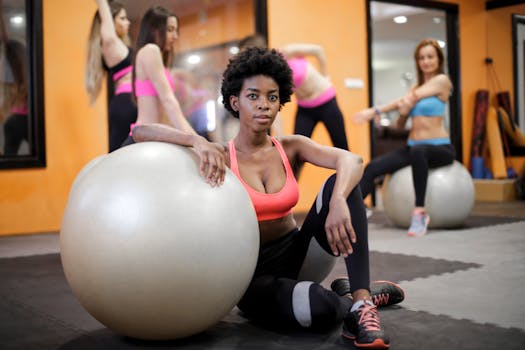
Table of Contents

- Introduction
- What is Yoga?
- Benefits of Yoga
- What is Pilates?
- Benefits of Pilates
- Yoga vs. Pilates
- How to Get Started
- Finding a Class
- Conclusion
Introduction

In today’s fast-paced world, finding balance and peace can be a challenge. This is where Yoga and Pilates come into play. Both practices offer unique physical and mental benefits that can help individuals achieve a healthier lifestyle. This article explores the intricacies of Yoga and Pilates, their benefits, and how to incorporate them into your daily routine.
What is Yoga?

Yoga is an ancient practice that originated in India over 5,000 years ago. It combines physical postures, breathing techniques, and meditation to enhance overall well-being. The word ‘Yoga’ means to unite, and it aims to harmonize the body, mind, and spirit. There are various styles of Yoga, including Hatha, Vinyasa, Ashtanga, and Kundalini, each offering different approaches and benefits.
Benefits of Yoga

Yoga is renowned for its physical and mental health benefits. Here are some key advantages:
- Increased Flexibility: Regular practice of Yoga improves flexibility, which can help prevent injuries and enhance physical performance.
- Improved Strength: Many Yoga poses build core strength, enhancing stability and overall muscle tone.
- Stress Reduction: The meditative aspects of Yoga help reduce stress and anxiety, leading to greater mental clarity.
- Enhanced Focus: Yoga encourages mindfulness, improving focus and concentration in daily activities.
- Better Posture: Yoga promotes body awareness, helping individuals maintain proper alignment and posture.
- Improved Breathing: Breathing techniques learned in Yoga can enhance lung capacity and overall respiratory function.
- Emotional Balance: Yoga fosters emotional resilience, helping practitioners manage their emotions effectively.
What is Pilates?

Pilates is a physical fitness system developed by Joseph Pilates in the early 20th century. It focuses on core strength, flexibility, and overall body awareness. Pilates can be performed on a mat or using specialized equipment like the Reformer. The practice emphasizes controlled movements, precision, and breath, making it an effective workout for all fitness levels.
Benefits of Pilates

Pilates provides numerous benefits that can enhance both physical and mental health:
- Core Strength: Pilates is renowned for its focus on building a strong core, which is essential for overall stability and posture.
- Improved Posture: Pilates promotes awareness of body alignment, helping to improve posture over time.
- Flexibility: Regular practice increases flexibility, allowing for a greater range of motion in daily activities.
- Balance and Coordination: The controlled movements of Pilates enhance balance and coordination, reducing the risk of falls.
- Stress Relief: Much like Yoga, Pilates can help alleviate stress through mindful movement and breath control.
- Injury Prevention: Strengthening muscles and improving flexibility can help prevent injuries in other physical activities.
- Enhanced Athletic Performance: Many athletes incorporate Pilates into their training regimens to improve their performance.
Yoga vs. Pilates

While both Yoga and Pilates offer significant health benefits, they differ in their focus and approach:
- Focus: Yoga emphasizes spiritual growth and mindfulness, while Pilates concentrates on physical fitness and strength.
- Breathwork: Both practices incorporate breath, but Yoga often incorporates breath as a means of meditation.
- Movement: Yoga involves flowing movements and holds, while Pilates focuses on controlled, precise movements.
- Equipment: Pilates often uses equipment like Reformers, whereas Yoga primarily relies on body weight and mats.
How to Get Started

Starting your journey with Yoga or Pilates is simple:
- Choose Your Practice: Decide whether you prefer Yoga, Pilates, or a combination of both.
- Find Resources: Utilize online videos, apps, or books to learn the basics of your chosen practice.
- Start Slow: Begin with beginner classes or sessions to avoid injury and gradually increase the intensity.
- Listen to Your Body: Pay attention to how your body feels during practice and adjust as needed.
- Stay Consistent: Regular practice is key to experiencing the full benefits of Yoga and Pilates.
Finding a Class

Look for local studios, gyms, or community centers that offer Yoga and Pilates classes. Many places provide trial classes, allowing you to find the right fit for your needs. Additionally, online classes have become increasingly popular, providing flexibility for those with busy schedules.







